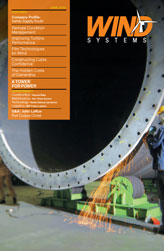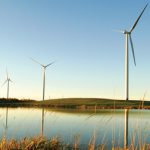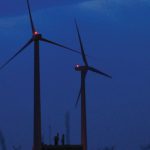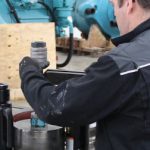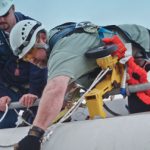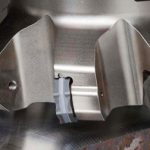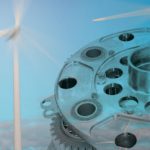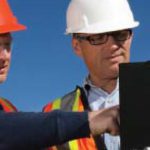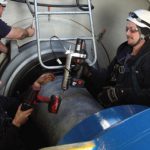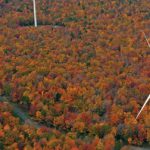In the Los Angeles office of Korindo Wind, a division of Jakarta-based multinational Korindo, President Ricky Seung and his staff put in at least two days every single day. The first coincides with the workday at the Indonesian plant where Korindo Wind manufactures towers for wind energy development. The second is in line with business hours kept by the company’s European customers. Through it all they work with their main priority, contacts in the United States where most of the towers are installed.
Seung and his staff are working around the clock to fill the capacity of Korindo Wind’s manufacturing facility in Ciwandan. The ISO 9001:2000 certified plant can produce 800 towers annually, the equivalent of more than 2 gigawatts of installed capacity. Figure 1
Since 2006, more than 500 U.S.-bound towers have rolled off Korindo Wind’s highly efficient line, manufactured and delivered for some of the biggest global names in wind turbine manufacturing. That surprises some in the industry, given that the company’s primary competitors do not have to ship their towers across the Pacific Ocean. But combine less-expensive steel in Indonesia and lower operating costs in Asia with Korindo Wind’s comprehensive delivery package, and the company has built-in advantages that allow it to offer favorable contracts and highly competitive pricing for the U.S. market. Even compared to domestic suppliers, Korindo Wind’s landed price often is equivalent to or less than the cost of getting towers from a U.S. factory to the project site.
Cost is only part of the equation, though, says Seung, who adds that success in the United States requires three things: indisputable quality, unsurpassed service from plant to project site, and overall value to the customer.
Quality Counts
The value starts with quality. Every wind tower supplier claims it manufactures high-quality towers, and some can back it up, but few can prove it to the extent of Korindo Wind. “Quality, quality, quality,” says Henry Kim, wind quality manager. “Our overall quality system, including the quality management we do in our factory, is many steps above where most tower manufacturers are today. Since we are one of the few ISO certified tower manufacturers in the world, of course we meet those requirements, but we go beyond that at every stage.”
Kim has the qualifications and experience to pass judgment. He is an American Welding Society (AWS) certified welding inspector and, prior to joining Korindo Wind in 2006, he was the head quality manager at one of the company’s competitors. He is one of two quality managers in the Ciwandan plant, and together they have more than 20 years of experience in wind tower welding and fabrication. Figure 2
Their quality team does inspections at every single point of the process: raw material receiving, cutting, beveling, rolling, fit-up, submerged arc welding, blasting, painting, and assembly. Every step is documented with precision to ensure traceability. If there is a problem down the line, the company can pinpoint where it originated and address it immediately. Then there is a final shipping inspection before the sections leave the plant, a surveyor at the port ensures the integrity and quality of the sections has been maintained during transport, and another inspects them when they arrive in the United States.
Korindo Wind also has the credentials to back up its quality claim. The ISO certification guarantees customers that the company adheres to or exceeds the most stringent quality documentation requirements in the industry. Every Korindo Wind welder is AWS certified, and the 33-person quality team includes certified welding, coating and non-destructive testing inspectors.
Donald Rawson, an independent coatings inspector with a Level 2 National Association of Corrosion Engineers (NACE) certification, has inspected towers manufactured by four different companies. “I’d put their coating quality right up there with the top tower manufacturers,” he says. “The last inspection job that I went out on for them was probably the best I’ve ever seen.”
The real proof, though, is in the performance of Korindo Wind towers. In more than three years of manufacturing and delivery, there has not been one significant quality issue. That’s important, especially in a market that has shifted its focus from capacity and volume to quality and performance.
Upside of the Downturn
The recent worldwide economic downturn has impacted tower manufacturers that supply the U.S. market in obvious and often painful ways. Many have been forced to cut workers and others have had to halt production entirely. But there have been less-obvious consequences, as well. The level of quality that turbine manufacturers and developers are now demanding is an excellent example.
Even two to three years ago, turbine manufacturers couldn’t find enough tower suppliers to meet their needs, so capacity was the primary driver for placing orders. Those companies worked with anyone who could meet their volume demands. In general, tower manufacturers focused on completing as many towers as possible as quickly as possible, sometimes to the detriment of quality.
Today, with tower plants sitting idle and others with significantly reduced volumes, turbine manufacturers have the luxury of being more selective in supplier selection and are demanding higher quality and better service at lower prices. They also have time to more thoroughly evaluate potential suppliers for those attributes. Figure 3
Korindo Wind welcomes the new, heightened standard. “Turbine manufacturers have raised the bar to a new level, and we think it’s great,” Seung says. “Korindo Wind has been manufacturing to the higher level since the beginning, so we have no problems meeting the new expectations. We have tremendous confidence in our quality systems, our people, and our factory, so in many ways the situation makes our greatest strength even stronger.”
As other companies rush to play catch-up with their quality control systems, Korindo Wind continues to do what it’s been doing all along while gaining ground in research and development.
Efficient Systems
Korindo Wind has been exacting in the development of its operation from the beginning. The management team that runs the Ciwandan plant brought nearly 50 years of combined experience in wind tower manufacturing and quality assurance to designing the facility. That team has been a key to developing the quality that has become Korindo Wind’s calling card.
“Because of our depth of knowledge and experience in manufacturing towers, we were schooled in potential defects before we even built the plant. We’ve been able to take a pre-emptive approach and apply lessons learned to our layout and processes,” Kim says. “That saves time and money, and not just for Korindo Wind but for our customers, as well.” Figure 4
The plant features all the same high-tech, precision manufacturing, and measuring equipment that can be found in competitors’ facilities, and the quality team does ultrasonic and non-destructive testing on site. The plant’s linear production line is a model of efficiency. Raw materials enter at one end and completed tower sections exit the other with zero waste of time, effort, or material in between.
That allows Korindo Wind to produce more towers faster while maintaining its stringent quality requirements and, overall, charge less. And, with its location only one kilometer from the Port of Ciwandan, the company can cost-effectively ship towers anywhere in the world.
Consistent Delivery
Korindo Wind has never been late on a delivery, which carries a lot of weight in an industry where timing is everything and delays can cost millions a day. But it’s all in a day’s work for Korindo Wind; if the plant falls behind, the sections will literally miss the boat.
“We actually can’t be late because the vessels are scheduled in advance and we have to pay thousands a day just to have them sit in the port,” Seung says. “Whatever it takes to stay on schedule, we’re going to get it done.” Figure 5
To make sure that happens every time, Korindo Wind has developed a “comprehensive tower solution” that encompasses everything from sourcing raw materials to manufacturing and assembly to delivery duty paid (DDP) transportation. The company also owns and handles reverse logistics for the specialized H-frames that are needed to safely stack sections on ships.
With DDP the seller retains all risks and is responsible for all costs until the sections reach the agreed-upon destination. That can be a port, or because the company has strong ties with a domestic heavy hauler, all the way to the project site.
The logistics package addresses any concerns that customers may have about getting Korindo Wind towers to their U.S. project sites, according to General Manager David Choi. “It’s a full-service deal,” he says. “We provide the stacking frames and insurance, we coordinate the ships and handle the ocean freight, we take care of the duty and clearing customs, and we handle all of the port work and storage. It’s almost as if you’ve purchased from a domestic supplier, but you have the option of going to the port closest to your project site in the States or anywhere in the world.”
Choi says the logistics services also give customers certainty in what can be a highly volatile shipping market because Korindo Wind has negotiated a maximum rate with an ocean freight business partner. In addition, since all the towers arrive at the port closest to the site, domestic logistics and state-by-state permitting challenges are minimized. It also reduces inland transport costs, which can be substantial. Just to load a section and go down the street can cost $10,000 and, depending on the distance, can be as much as $50,000-$100,000 to haul it from a U.S. plant to a project site.
Another advantage that’s not quite so obvious is that all the sections arrive at the same time, ready to install. “It’s a project manager’s dream,” according to Seung. “He knows exactly when 20 towers will be arriving in the Port of Houston, for example, and he can schedule cranes accordingly. Those cranes cost an incredible amount for every day they are on site. With Korindo Wind, they’re not going to be sitting idle waiting for a top section that’s still on the line in a plant somewhere.”
Korindo Wind inspectors go over the sections at the port, and the company takes care of repairing any minor handling damage that may have occurred in transit. The company works with independent maintenance and repair providers to address issues once the towers are installed. “We do everything in our power to ensure customers get exactly what we’ve promised,” Seung says. “It all flows from Korindo, which has kept customers at the center of its corporate philosophy and vision more than four decades.
Strength from Strength
Founded in Jakarta in 1969, Korindo is a multibillion-dollar company comprising 14 divisions that serve diverse industries worldwide. They are engaged in timber and forest management; paper manufacturing and recycling; and the manufacturing of buses and trucks, parts for commercial vehicles, chemicals, palm oil, heavy vessels, and containers. They are also in trading, financial services, insurance, real estate development, logistics, and shipping. Overall, Korindo companies employ more than 30,000 people who export products and services to every corner of the world, including the United States, Japan, Korea, China, Singapore, Taiwan, Malaysia, India, the Middle East, and Europe.
In 2006 Korindo built the Ciwandan plant and entered the global wind energy market. It was a natural extension for a business that has long focused on sustainability and conservation. One of Korindo’s guiding principles reads that “We must not only provide great service and value for our customers, we must also respect and protect the environment.” Seung says every division is held to that standard.
“Sustainability is a general theme and way of doing business throughout all of Korindo,” he says. For example, when the timber division takes trees from a tropical forest, the company replants multiple new trees for each one harvested. “Anything that’s taken out and used is replaced by fivefold. Korindo has re-cultivated hectares and hectares of land, basically creating another forest in the process.”
Seung says that Korindo’s environmental and customer-friendly approach, financial strength, and multinational experience provide significant advantages in a tight market. “With Korindo behind us, we are able to take reasonable risks in putting together pricing and logistics packages that other suppliers can’t match and that help make projects feasible,” he says. “It also helps people understand we’re not a fly-by-night start-up. Korindo companies have decades of experience in heavy manufacturing, logistics, and other areas that are crucial to wind energy customers. We’ve brought all of that to bear in shaping Korindo Wind.”



















